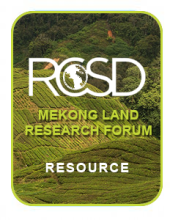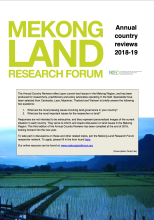/ library resources
Showing items 1 through 9 of 11.Armed conflicts create drastic socioeconomic shocks that lead to land use and land cover changes in ways that are not yet well understood. Several studies have used satellite imagery to detect such changes during periods of conflict.
In 2012, the Government of Myanmar passed the Farmland Law and the Vacant, Fallow, Virgin Land Law, with an aim to increase investment in land through the formalization of a land market.
As Vietnam embraces the market economy, and a number of state policies promote reforestation and rural market integration, land use and land cover (LULC) changes are occurring in the country’s northern uplands in increasingly complex and fragmented ways.
In Myanmar, movements for gender justice strive to foster personal and collective security, vibrant livelihoods, and political engagement during a period of rapid and uncertain transition.
ABSTRACTED FROM THE FIRST TWO PARAGRAPHS: Over the past several years, the enormity of the environmental challenges facing the Mekong River Delta region of southern Vietnam has become increasingly clear.
The rubber tree is native to the humid tropics and has traditionally been cropped in the equatorial zone between 108Nand 108S; in mainland Southeast Asia this includes portions of southern Thailand, southeastern Vietnam, and southern Myanmar.
SUMMARY: Despite a centralized political system, nation-wide legal reforms, and similar high housing demand pressures, property rights have evolved differently in Vietnam’s two leading cities Hanoi and Ho Chi Minh City during the transition period.
The process of decollectivization in Vietnam, leading up to the 1993 Land Law, ensured farming households the rights to market their own produce and to transfer, exchange, lease, inherit, and mortgage their land-use rights.
The Annual Country Reviews reflect upon current land issues in the Mekong Region, and has been produced for researchers, practitioners and policy advocates operating in the field.
Pagination
Land Library Search
Through our robust search engine, you can search for any item of the over 73,000 highly curated resources in the Land Library.
If you would like to find an overview of what is possible, feel free to peruse the Search Guide.


